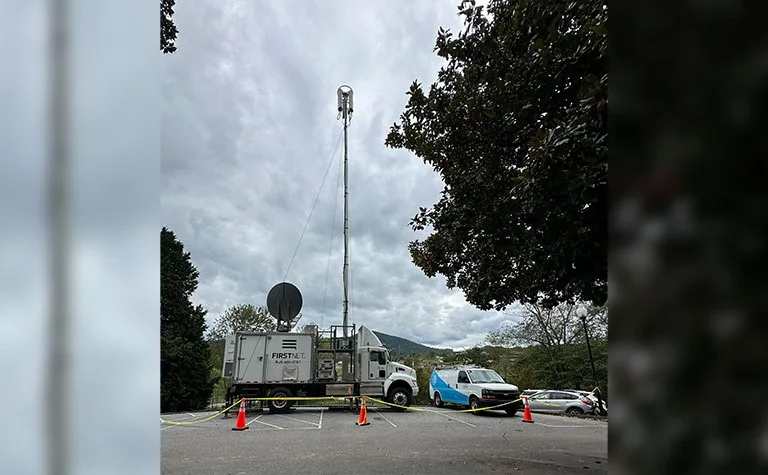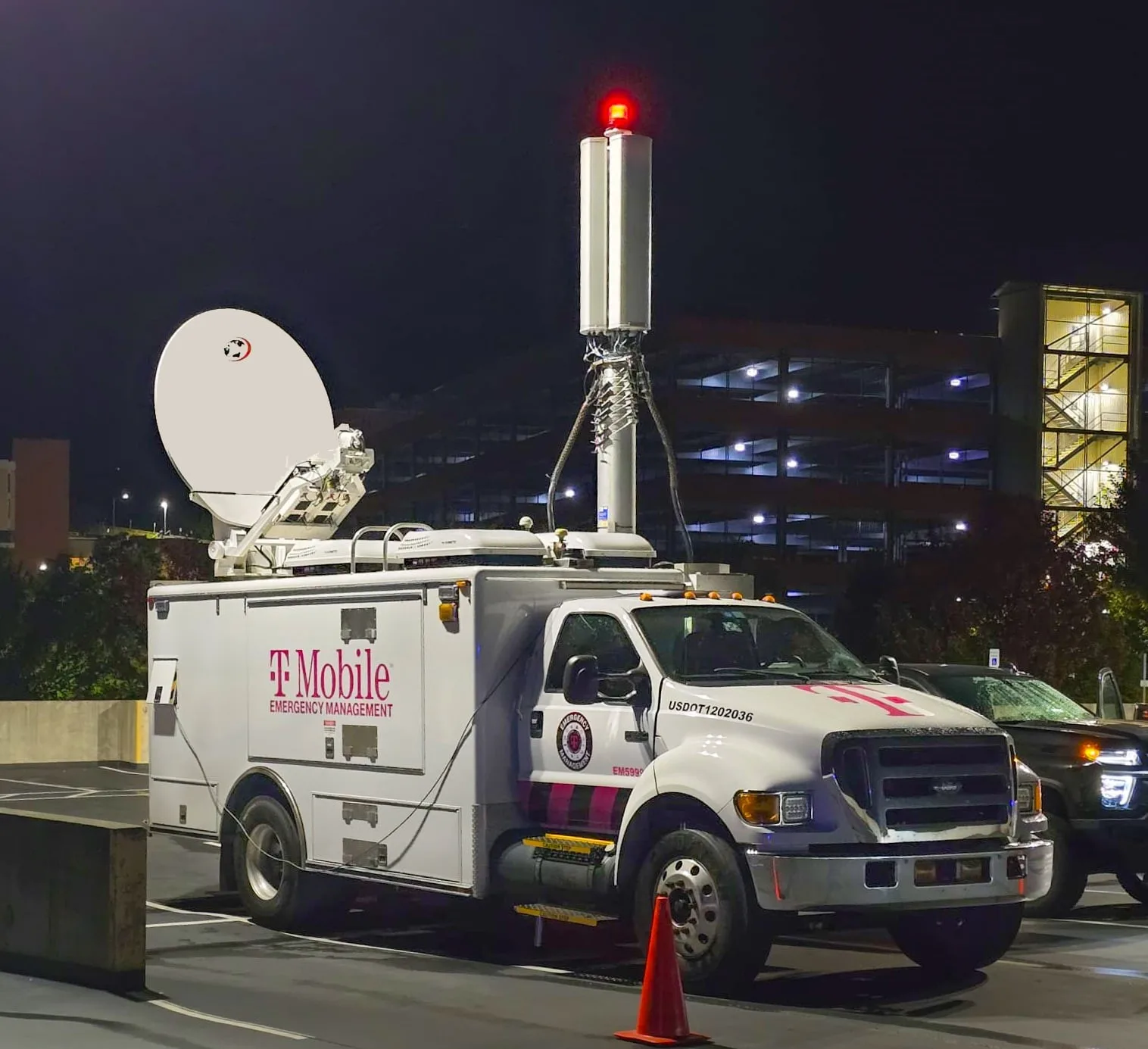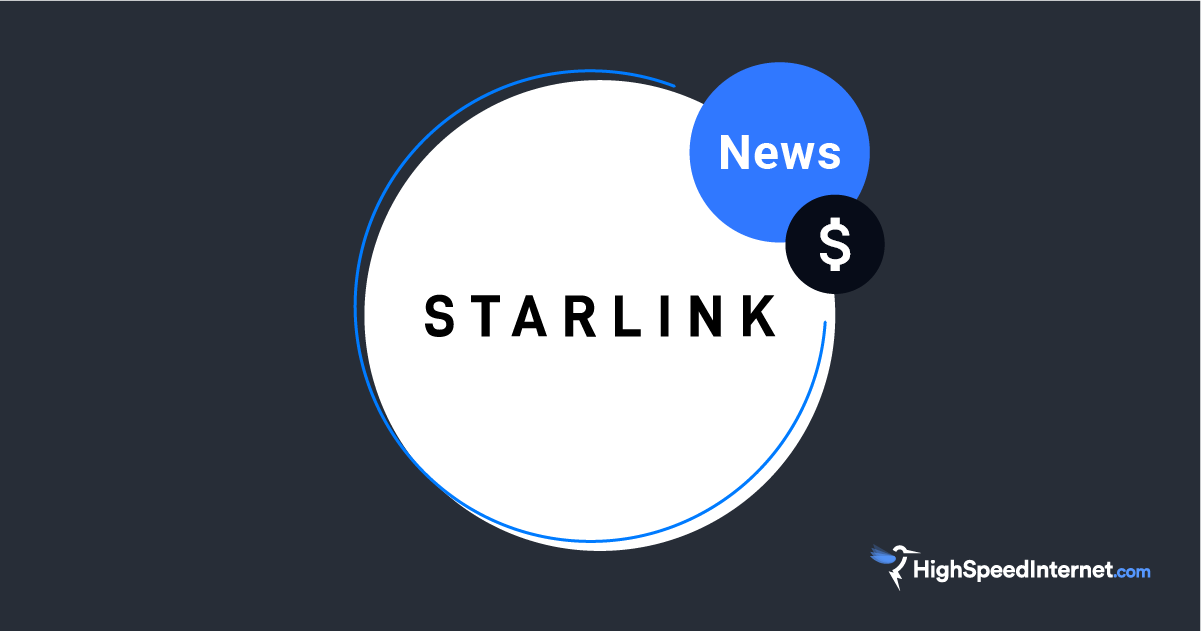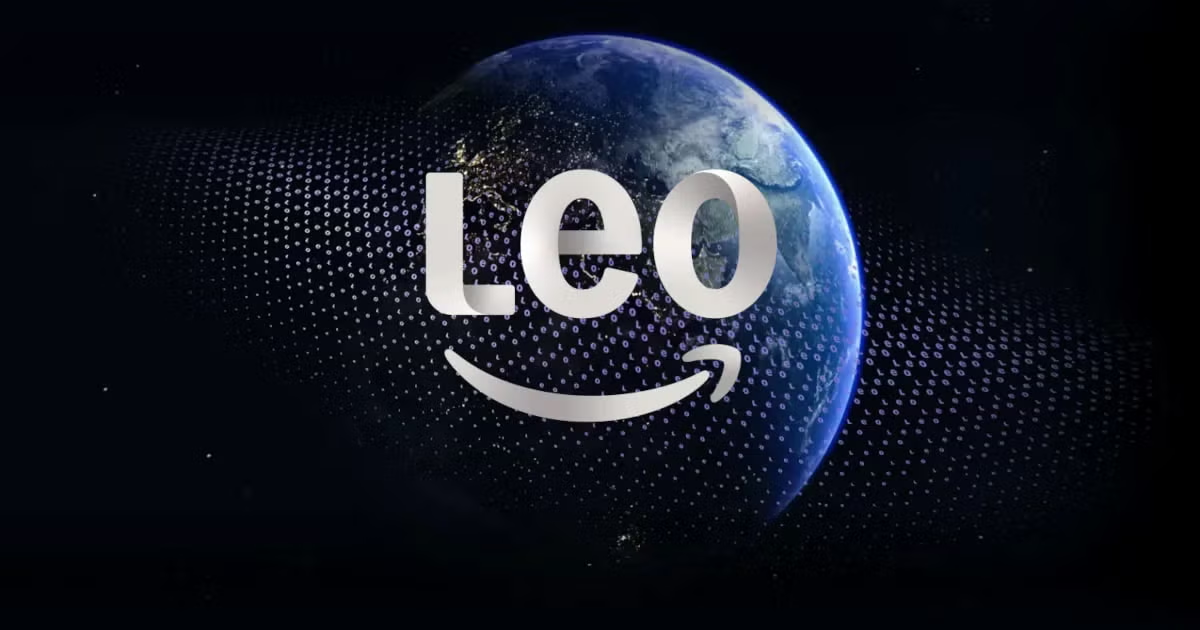Satellite Internet Connects Communities after Hurricane Helene
Satellite internet was the only option in many areas
Oct 2, 2024 | Share
Emergency, News
After Hurricane Helene wreaked havoc across several states and killed at least 100 people, Starlink became one of quickest ways for people to reach the outside world. Paired with satellite-enabled trucks from mobile-service providers, satellite internet offered emergency connectivity to thousands.
Starlink internet in action
Many private individuals set up Starlink networks and offered free access to their neighbors, and FEMA delivered 40 Starlink systems, plus 25 trailers of meals, 60 trailers of water, and 30 generators to the hardest-hit areas.
Governments also set up Starlink networks in places like public shelters and fire departments.
SpaceX didn’t make any public announcements about Helene in particular, but said on X.com that “Being able to connect in minutes makes Starlink ideal as a backup in an emergency, as well as providing relief efforts with the support they need quickly.”

Starlink reposted from customer Doug Donnell, who set up his receiver as the storm was headed his way. He said the process was quick and easy.
Former President Donald J. Trump said on Monday that he had spoken with Starlink owner Elon Musk about getting Starlink deployed in disaster areas, and later Musk posted about the conversation and said he was sending “as many terminals as possible” right away.
Later, a release from The White House said 40 Starlink systems were already available in North Carolina, with an additional 140 on the way.
“One Starlink will be deployed per county Emergency Operations Center to assist with communications,” according to the release.
As the hours passed, former NASCAR driver Greg Biffle posted a video on X saying Starlink had donated 500 Starlink kits. Biffle planned to organize dozens of private helicopters to deliver them throughout the disaster area. The Y’all Squad, a non-governmental organization focused on helping communities impacted by severe weather events, also bought and delivered Starlink kits to North Carolina.
Satellite solutions from mobile phone providers
While some were able to place video calls on Starlink, mobile phone providers deployed satellite-enabled mobile cell towers with a range of up to two miles. AT&T, for example, worked closely with state, federal, and local officials to restore service, according to a press release. The company has also waived cell phone overages for customers throughout the Southeast until Oct. 27, 2024.

Verizon customers, on the other hand, had to deal with a nationwide outage on Monday on top of storm-related problems. It is waiving overage charges until Oct. 5 and deploying vendors to refuel backup generators throughout the disaster area. It also sent out more than 20 “mobile satellite assets” for temporary cell connections, according to a press release.
T-Mobile, meanwhile, sent out its own SatCOLTS and created emergency connectivity centers in multiple locations.

Starlink Mini performance
I haven’t tried using Starlink in a hurricane, but I ordered a Mini receiver to see how long the setup would take and what kind of speeds I could get.
Plugged into a standard wall outlet, I had full signal strength on the Starlink Mini within about ten minutes despite significant obstructions from things like trees and buildings. I saw download speeds ranging from 14.25Mbps on Wi-Fi all the way up to 230.49Mbps when connected via Ethernet.
Plugged into an emergency generator in the same location, I had slow speeds for about 20 minutes but saw speeds in the range of 75–100Mbps after the system stabilized.

When I tested the system in a light rainstorm way up in the mountains, I had plenty of download speed to stream Netflix or navigate via Google Maps, but never got enough signal for video chat. I was able to upload video while on Wi-Fi about 30 feet from the receiver, but it was slow and frustrating.
I tested the Starlink Mini using the pausable 50GB Roam plan, which costs $50 per month. Over several days of testing, I didn’t come close to the data limit, which was nice, but I had a lot of trouble finding suitable power sources away from home.
Conclusion: Is satellite internet good for emergencies?
Starlink is a great communication tool in emergency situations, but it can be too expensive for most private citizens. We loved seeing public agencies deploying the service during the aftermath of Hurricane Helene, and there’s no denying that connectivity is paramount. That said, maybe those agencies and public welfare organizations—and not everyday people—should be the first to stock up on Starlink receivers for worst-case scenarios.
There’s no harm in buying a Starlink dish and stowing it for emergencies, but you would be out several hundred dollars. You’ll also need a generator capable of powering the dish and a decent way to mount it, not to mention devices like laptops and cell phones to actually use the connection once it’s up and running.
If emergency strikes, you would also need quick digital access to $50 bucks to pay for a month of service. The plan is pausable, which is great, but you can’t prepay data or rollover unused data from previous months. If you already have Starlink as your Internet service provider, you’ll have service when everyone else doesn’t.
For most people, cheaper options will do just fine.
Visit our expert archive to learn how to stay connected in a natural disaster and how to prepare your tech in case of hurricane or other big storm.
Is Starlink right for you?
Enter your zip code below to compare local providers.
Author - Chili Palmer
Chili Palmer covers home tech services, with a special focus on understanding what families need and how they can stay connected on a budget. She handles internet access and affordability, breaking news, mobile services, and consumer trends. Chili’s work as a writer, reporter, and editor has appeared in publications including Telecompetitor, Utah Business, Idaho Business Review, Benton Institute for Broadband & Society, and Switchful.com.
Editor - Jessica Brooksby
Jessica loves bringing her passion for the written word and her love of tech into one space at HighSpeedInternet.com. She works with the team’s writers to revise strong, user-focused content so every reader can find the tech that works for them. Jessica has a bachelor’s degree in English from Utah Valley University and seven years of creative and editorial experience. Outside of work, she spends her time gaming, reading, painting, and buying an excessive amount of Legend of Zelda merchandise.


